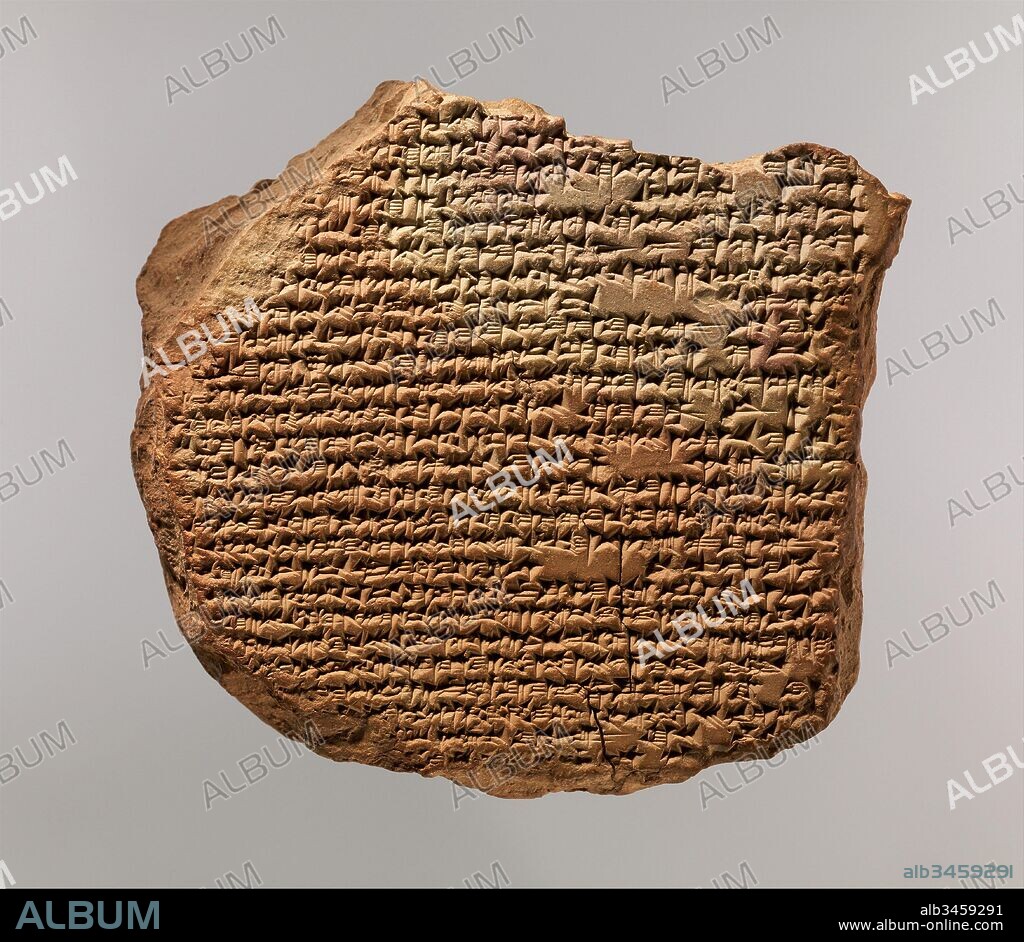alb3459291
Cuneiform tablet: hymn to Marduk, Neo-Babylonian (?), 1st millennium B.C., Mesopotamia, Babylonian (?), Clay, 3 1/2 x 3 7/8 x 1 1/8 in. (9 x 9.8 x 2.9 cm), Clay-Tablets-Inscribed, The god Marduk first became an important god in the early second millennium B.C., when Babylon (under its most famous king, Hammurabi) became the capital city of a large Babylonian state. Marduk’s importance in the pantheon of gods rose with the fame of the city of Babylon, so that in later periods he was the supreme deity.

|
Add to another lightbox |
|
Add to another lightbox |



Caption:
Cuneiform tablet: hymn to Marduk, Neo-Babylonian (?), 1st millennium B.C., Mesopotamia, Babylonian (?), Clay, 3 1/2 x 3 7/8 x 1 1/8 in. (9 x 9.8 x 2.9 cm), Clay-Tablets-Inscribed, The god Marduk first became an important god in the early second millennium B.C., when Babylon (under its most famous king, Hammurabi) became the capital city of a large Babylonian state. Marduk’s importance in the pantheon of gods rose with the fame of the city of Babylon, so that in later periods he was the supreme deity
Personalities:
Credit:
Album / quintlox
Releases:
Model: No - Property: No
Rights questions?
Rights questions?
Image size:
4684 x 4067 px | 54.5 MB
Print size:
39.7 x 34.4 cm | 15.6 x 13.6 in (300 dpi)
Keywords:
1ST MILLENNIUM B. C • 3 1/2 X 3 7/8 1 1/8 • 9 9.8 2.9 CM • ANT. OR.: MESOPOTAMIA • ANTIQUITIES ORIENTAL: MESOPOTAMIA • B. C • BABYLON • CAPITAL CITY • CITY • CLAY • CLAY-TABLETS-INSCRIBED • CUNEIFORM TABLET • EARLY SECOND • FAME • FAMINE • FAMOUS KING • FIRST • GOD • GODS ROSE • HAMMURABI • HUNGER • HUNGRY • HYMN • IMPORTANCE • IMPORTANT GOD • LARGE BABYLONIAN • LATER PERIODS • MARDUK • MESOPOTAMIA • MESOPOTAMIAN • MILLENNIUM • NEO-BABYLONIAN • PANTHEON • REPUTED • STATE • SUPREME DEITY • TOWN • TOWNS • UNDER
 Pinterest
Pinterest Twitter
Twitter Facebook
Facebook Copy link
Copy link Email
Email

